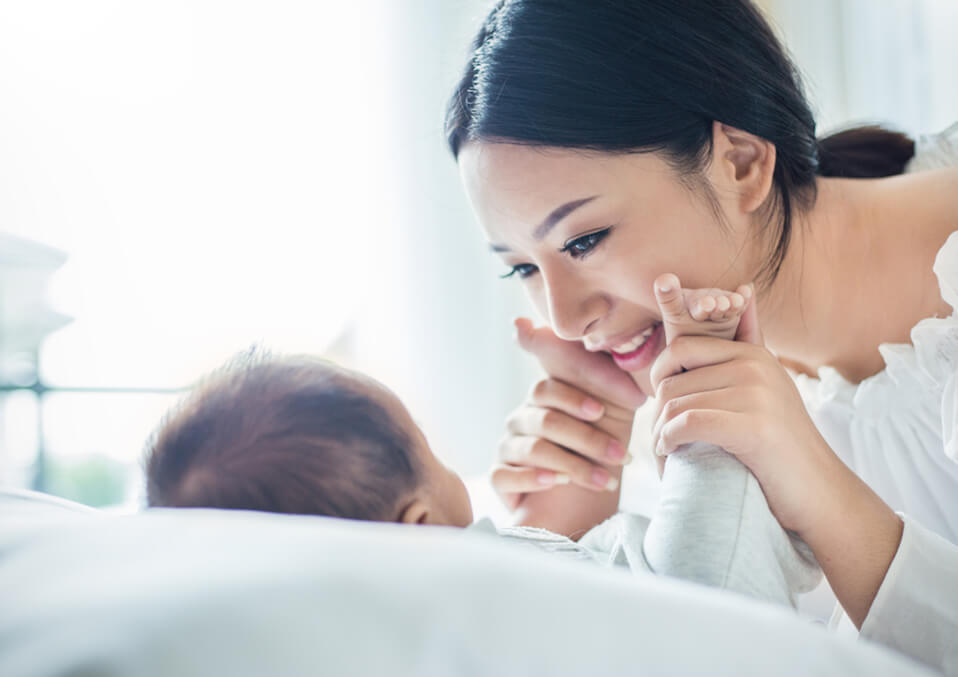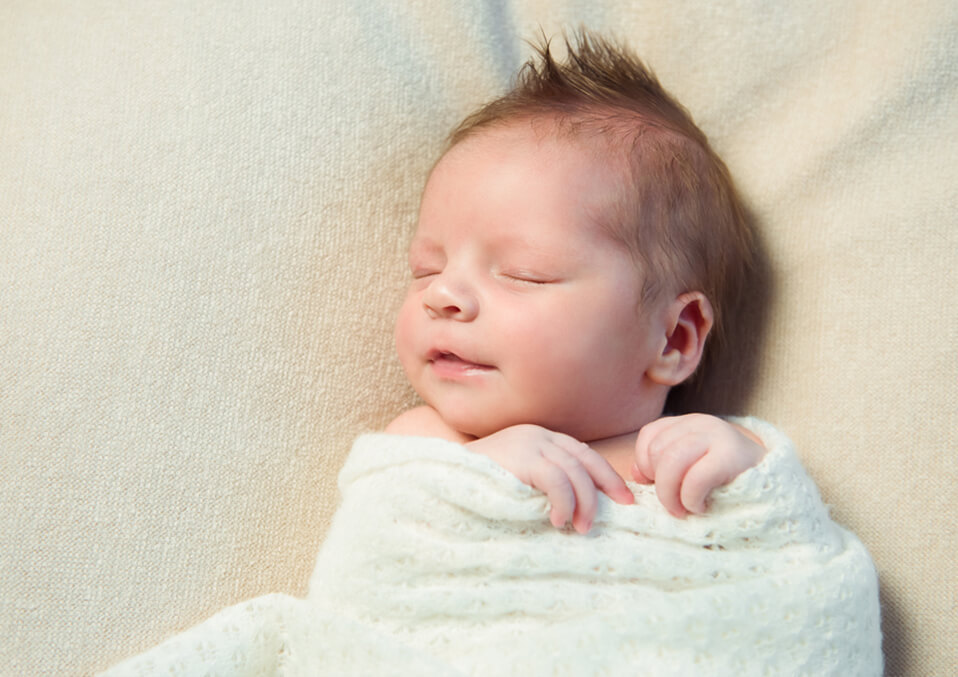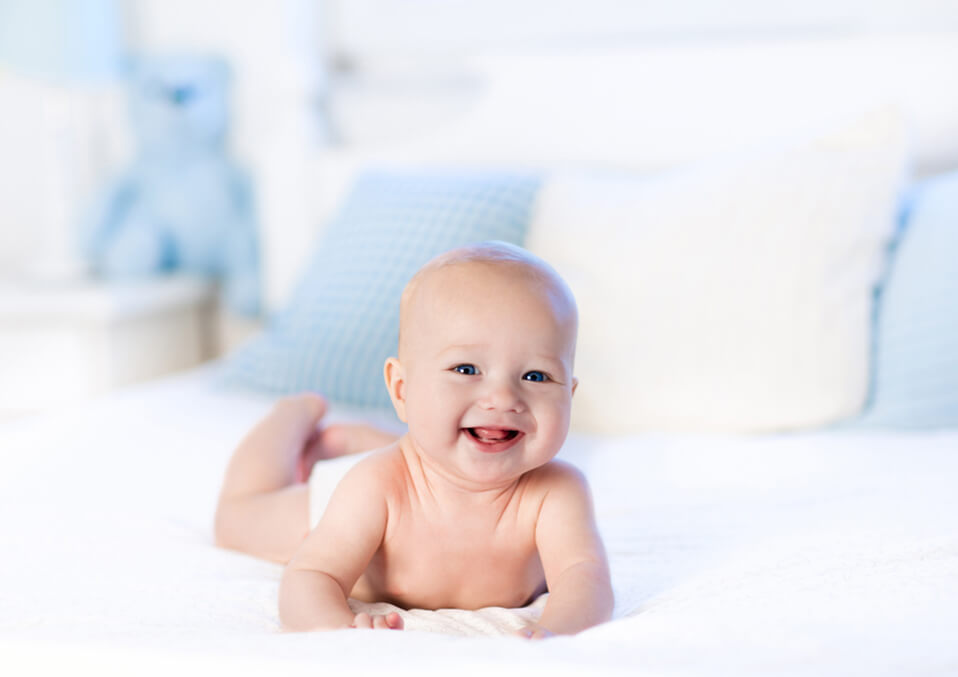
The smile of your child, particularly the first, is one of parenthood’s most enriching moments. When are babies laughing, however? Know how the child starts to grin and what social and emotional growth means.
If your baby beams for the first time, it will instantly appear worth a million years, the nights without rest, morning sickness, and newborn pressure. Nothing is more enjoyable than lighting a child’s face with a joyful acknowledgment and joy.
Smiling is also a welcoming sign of the child’s growing social skills, as the newborn transitions from a tender lump to a socio-friendly enticing baby.
When do babies smile?

Believe it or not, probably your child grinned even before she was conceived. In life, babies can even laugh at utero very early. These first smiles don’t respond intentionally or in any way.
These are automatic gestures, close to the jerky arm and leg motions of your baby’s body, as the device is checked. Your little cutie, though, will soon flash her first “true” grin. To turn, if you grin away, you will have a goofy smile on your face.
You’ve probably heard that the smiles in a newborn child are most likely “all air” until the baby is at least one month old — from your mother-in-law, your pediatrist, and all your kid’s friends. The fact is, they are right. Sadly.
Yet babies are grinning for reasons other than gas: many laughs because they eat, feel comfortable and happy or pee. Feel free, no matter what your purpose, to share these precious first smiles. Who could forgive you? Who could blame you?
You can see your child doing lots of smile exercises, learning, and discovering how her mouth moves before it delivers her first full-fledged public smile.
Her first “real” social smile is most likely between 6 and 8 weeks and most likely in reaction to mother’s or dad’s appreciation. She uses the whole face of a public grin, and not only her eyes— when you see it, you can see the difference.
Reflex gestures

The babies start grinning reflexes before birth, so they proceed as newborns. Such early smiles are called “reflex smiles.” Such smiles occur allegiantly, and reflexes usually stop about twenty months after birth, while the baby’s first genuine smile can be expected.
Smile reflex vs. genuine smile
A brief or spontaneous reflex grin is like when you sleep or go in the shower. The reflex smile is short. A genuine smile is triggered by something inside, like the sound of your mom, or the sight of your dad. The major difference? When it’s a genuine grin, the entire face of the child lights up.
Expecting your baby’s smiles

When she’s two months old, she will lose her reflex grin, and her first real smile will show somewhere between 6 and 12 weeks. Through timing and length, you can differentiate between a projection and a sincere smile.
Generally, when the baby sleeps or is sleepy, reflex expressions become brief and spontaneous. On the other hand, genuine smiles come about as a reaction to something like seeing the eyes of her mom and hearing the voice of a friend, and they are persistent. They are constant. When the real affair is, you’ll see your baby’s feeling displayed.
If you’re still waiting to see a curve of the lips of your kid, you might inspire her to do some things. Speak with her regularly, make frequent eye contacts, and smile all day.
Get dumb, too. It can click on its smiley button to create funny faces and noises, mimic animal sounds and movements, blow on your baby’s bottom, and play a peek-a-boo game. Don’t overdo it. Babies develop the ability to control their thoughts, and if too much noise, they will look away.
Things to consider
Smile at her, cuddle her, play with her, and chat with her a bit to assist your child. A baby can not be abused. Several tests have shown that babies who get plenty of parental care and affection mature more quickly, have bigger brains, and are more social.
Just as some parents laugh more than others, so too are some children. Don’t be surprised if your one-month-old still doesn’t wave. This first “true” smile can seem frustratingly mysterious because it can always come between 4 weeks and four months of age except for some of the happiest children.
You might have read that an early indicator of autism spectrum disorder is a first break in grinning. However, while it does, the only symptom that a kid can encounter on the autism spectrum is very seldom distracted grinning.
It might at least not be a smiley personality if your baby has not smiled four months but is a vocalist, has eyesight communication and answers the verbal and visual questions, and is at least not at this early stage of development. Speak to your pediatrician about all your questions.
Takeaway
He will do it again and again once the kid grins. Why should he not? Second, a combination of an auditory and visual stimulus is your young man’s happy face. So, when you hear a beloved lullaby sing and speak to him through an exceptionally joyous shift in the crib. Afterward, just seeing the sight of his two favorite people would be sufficient to make him happy.
You will earn most of the baby’s smiles, but he will share laughs with other fellows, too. When your kid becomes more enjoyable with the grin of seeing the reactions of people, he will start to add sound effects. At the same moment, as your child smiles first, he will probably learn his first coos, which will take him on a new and exciting social development.
Enjoy it everything! There’s still no need to stress if your child isn’t still smiling. It could only be their character and attitude. It means that you should make the health care provider aware of any issues, in general if the child does not interact with you or your parents for three months or longer through sounds and gestures.
Read also:
- When Do Babies Start Laughing
- Top-Notch Funny Baby Shower Gift Ideas
- What You Should Know About Your Baby’s Cheeks


